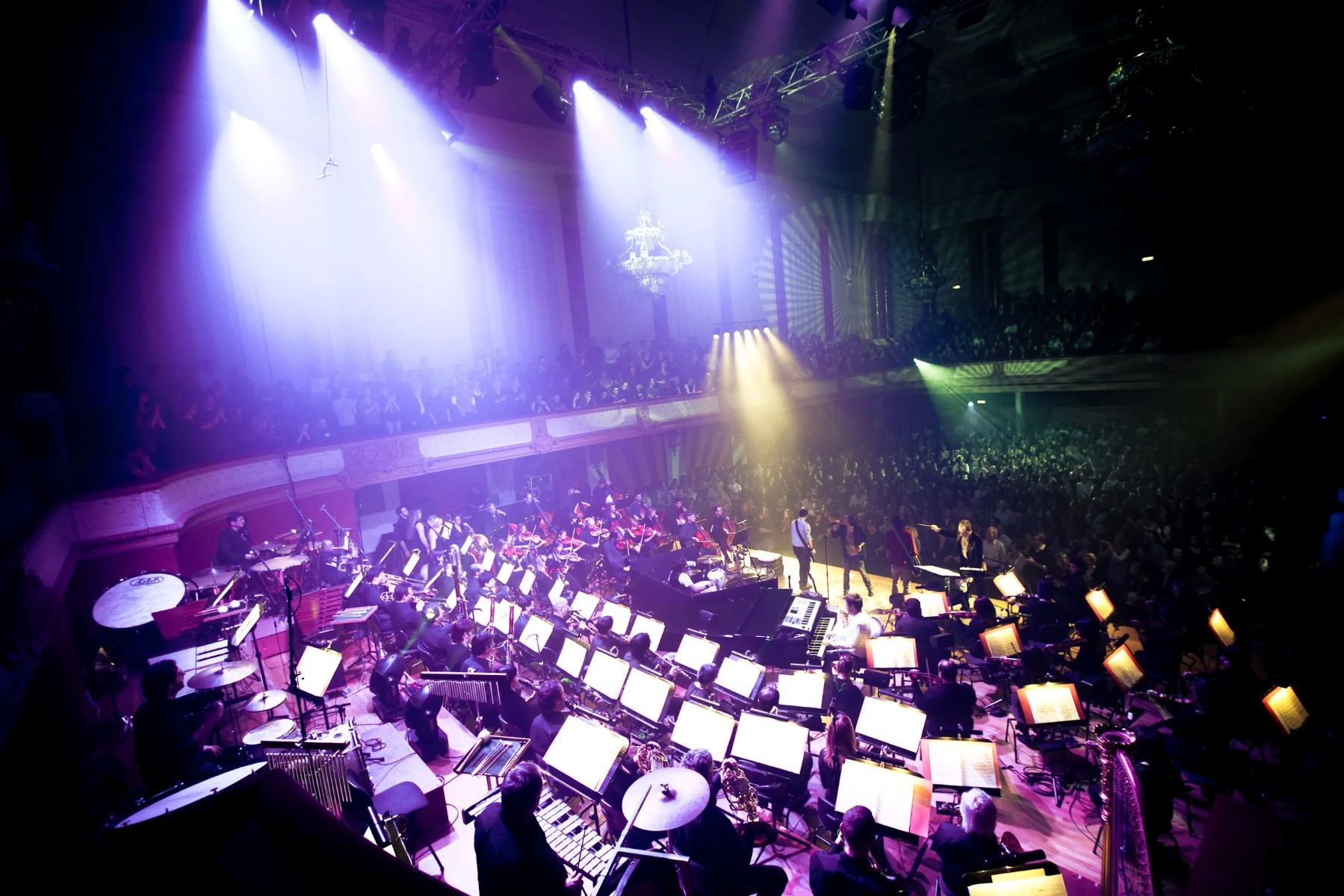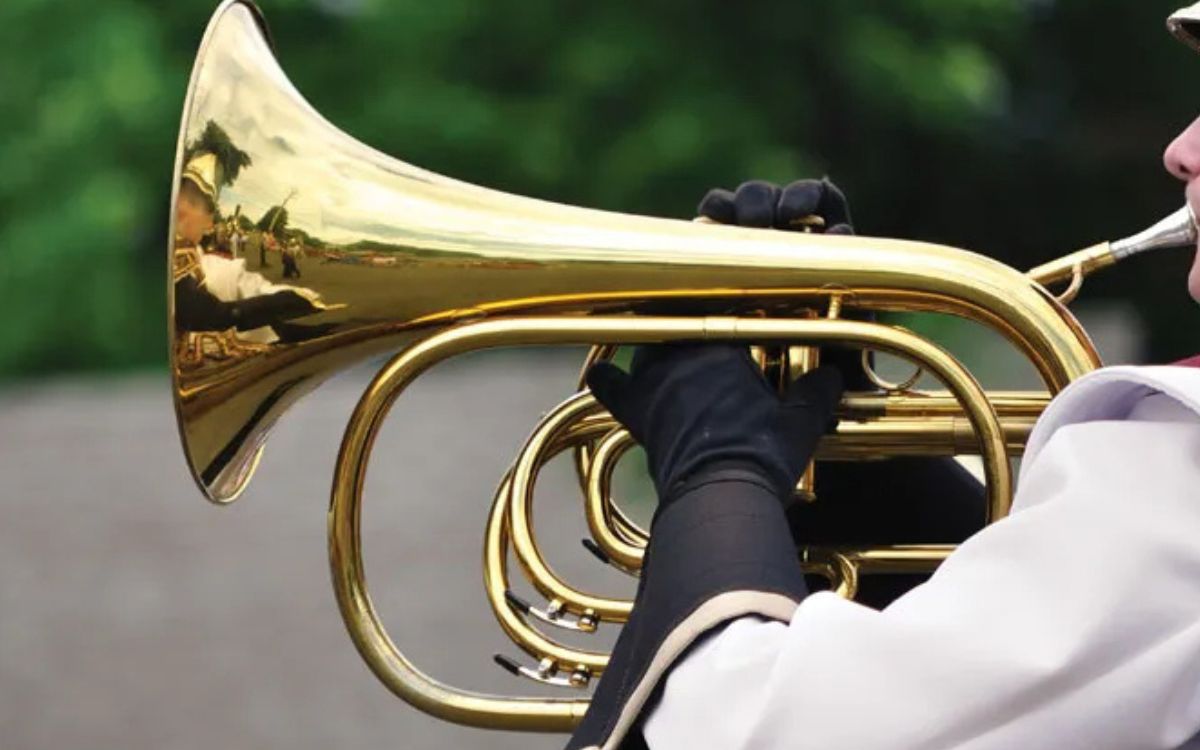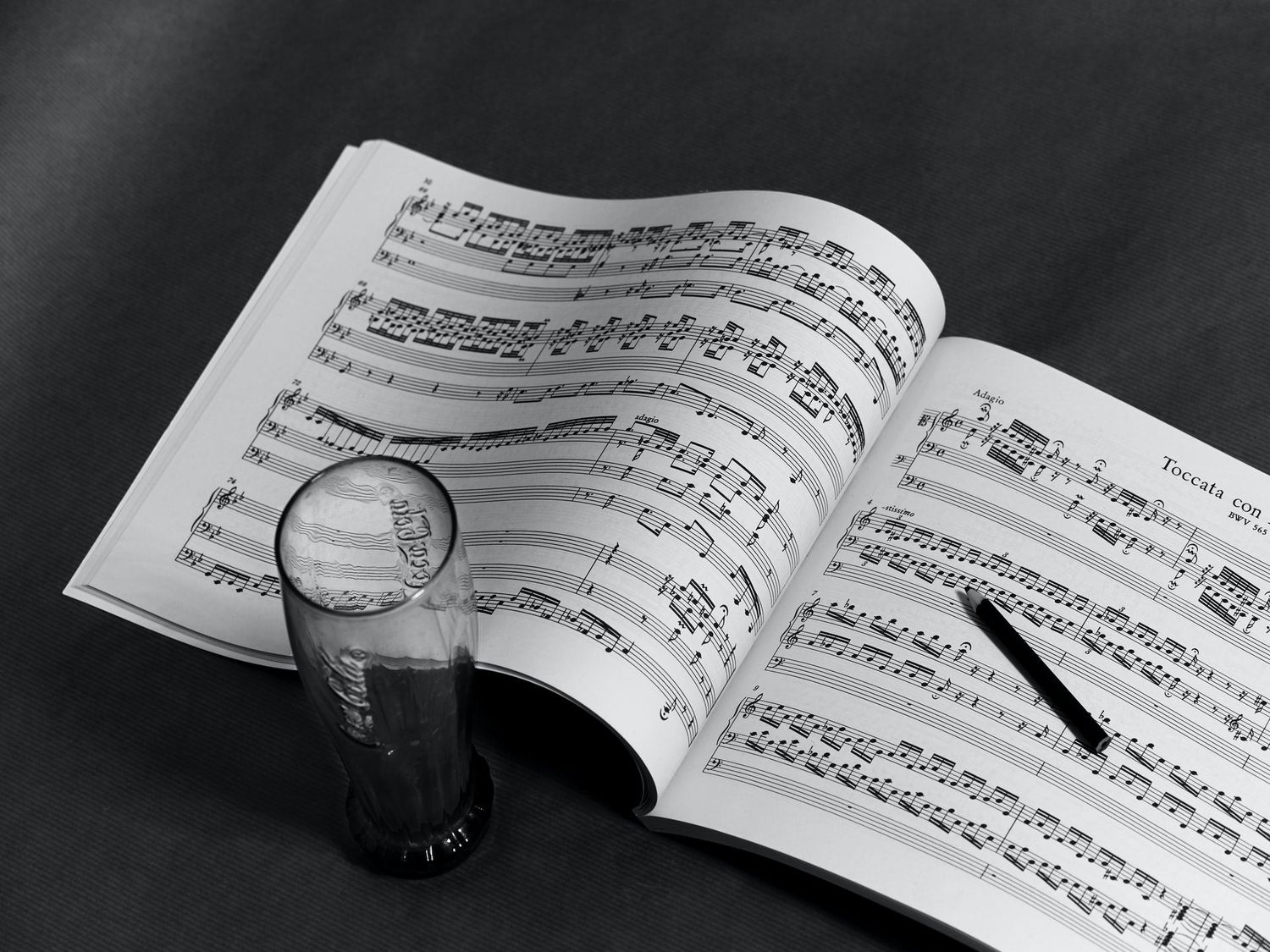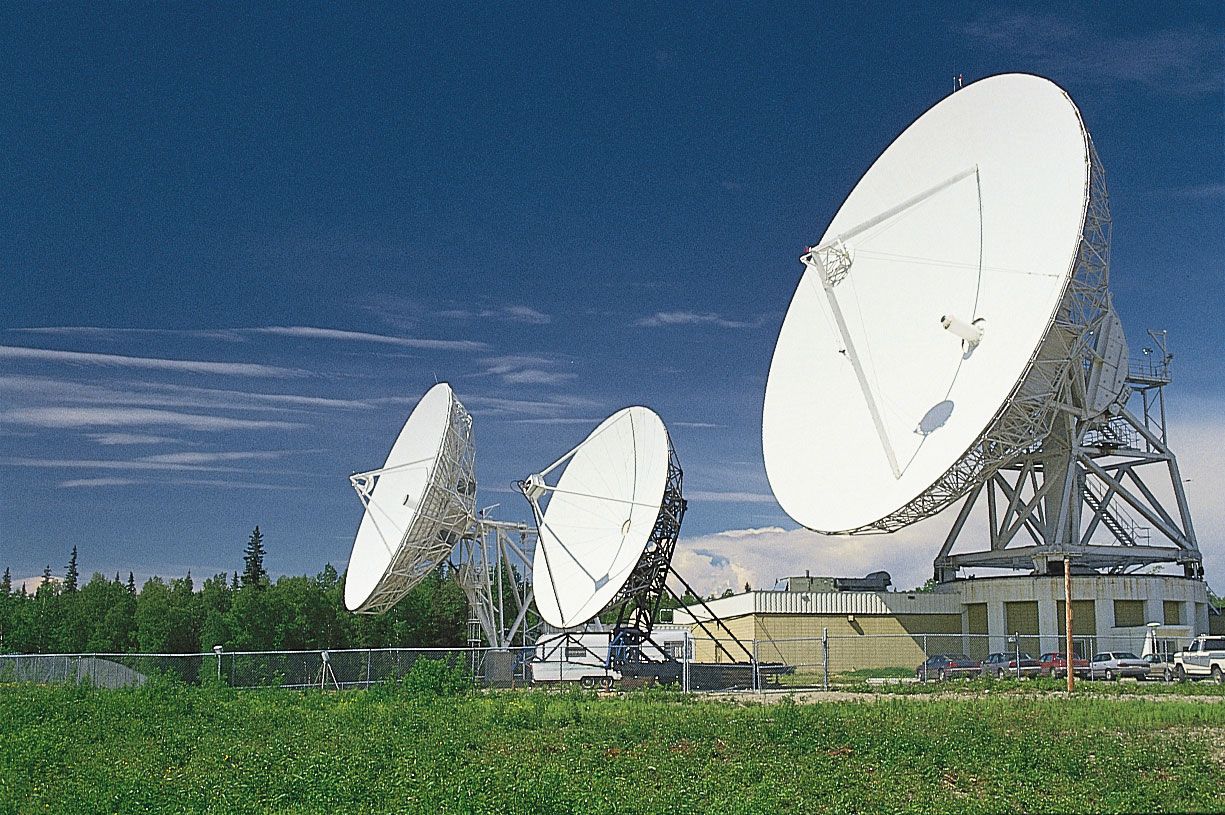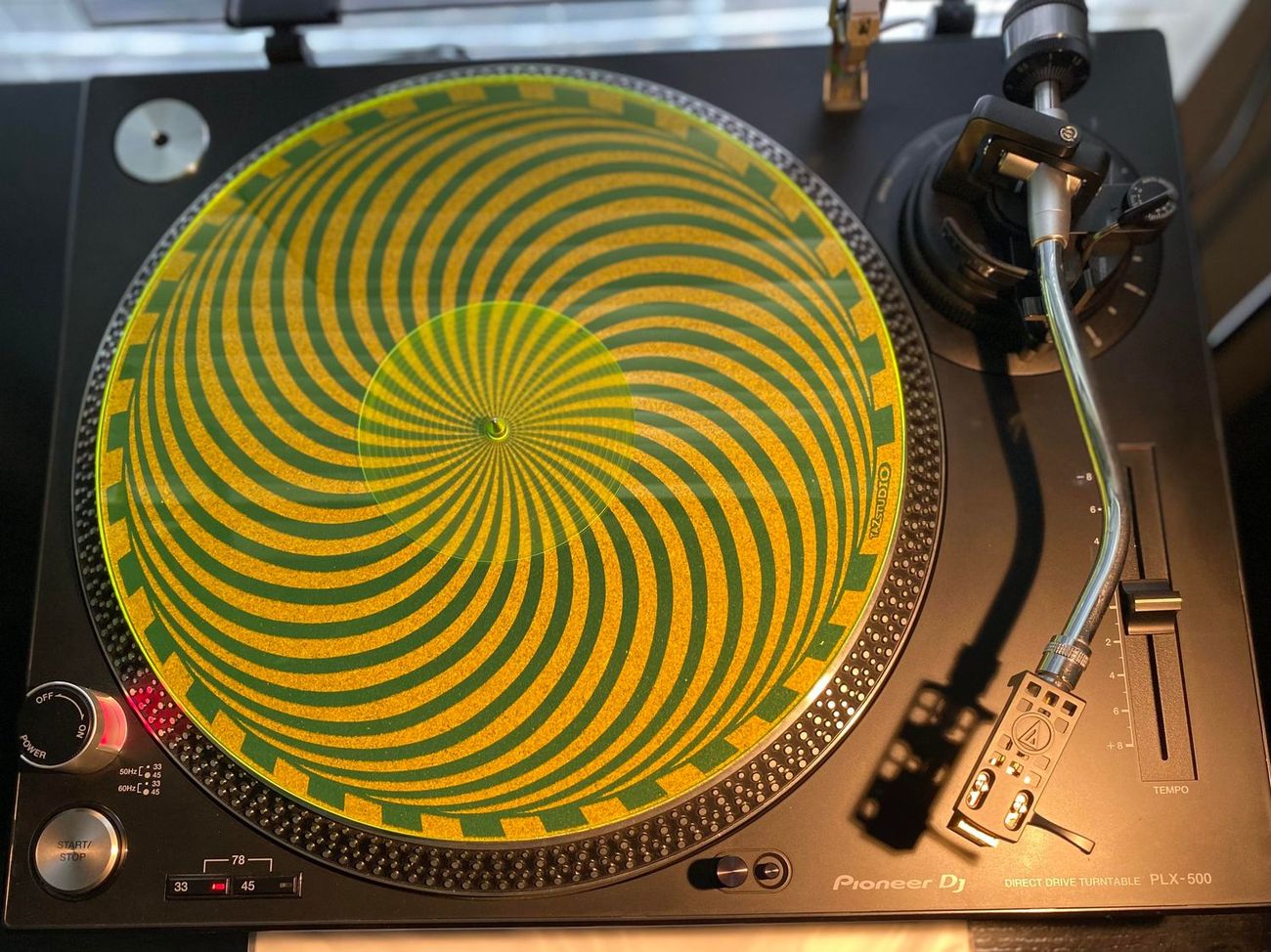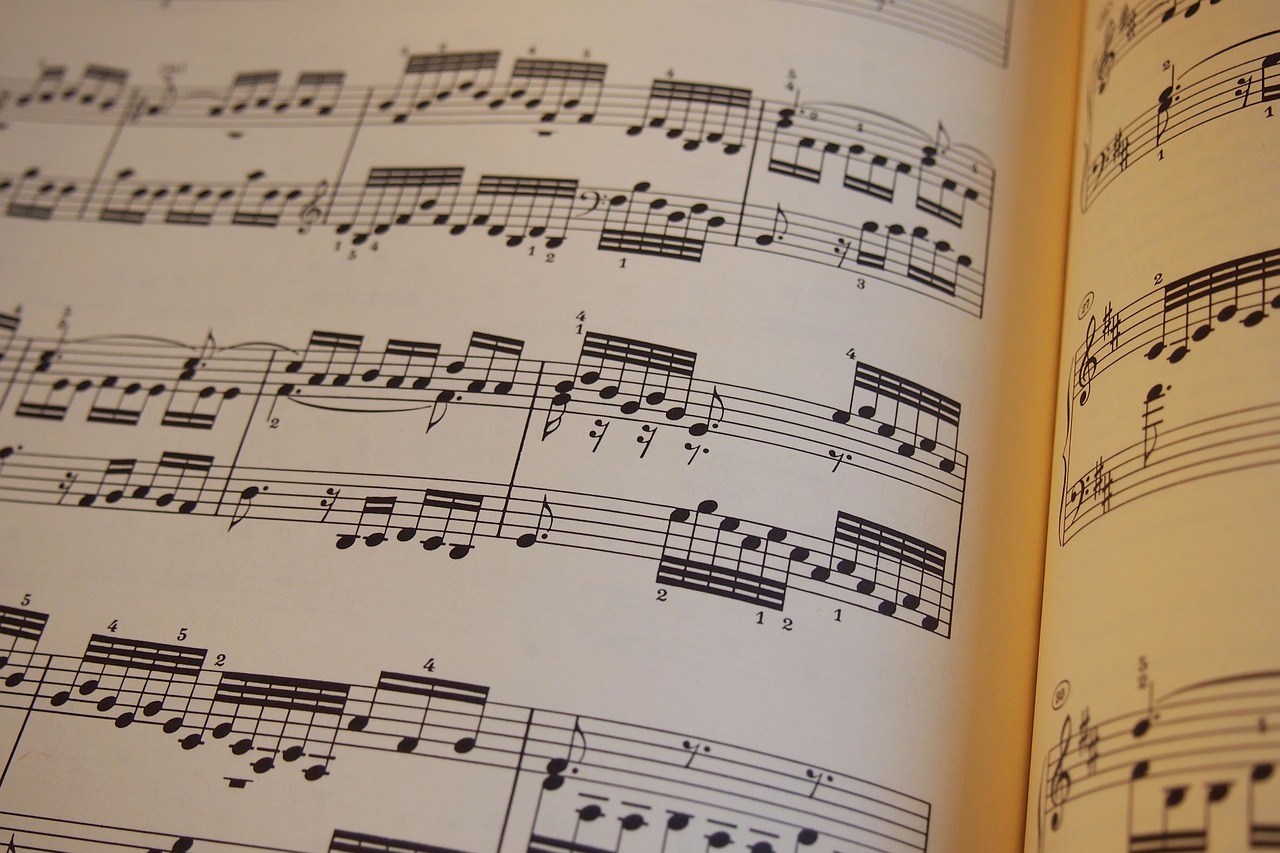Home>Production & Technology>Tempo>How Does The Tempo Of Music Affect How Fast You Write


Tempo
How Does The Tempo Of Music Affect How Fast You Write
Modified: January 22, 2024
Discover the impact of music tempo on your writing speed. Uncover how variations in tempo can influence your productivity and creativity.
(Many of the links in this article redirect to a specific reviewed product. Your purchase of these products through affiliate links helps to generate commission for AudioLover.com, at no extra cost. Learn more)
Table of Contents
- Introduction
- The Relationship between Music and Productivity
- Understanding Tempo in Music
- The Connection between Tempo and Writing Speed
- How Slow Tempo Influences Writing Speed
- The Impact of Fast Tempo on Writing Speed
- Factors that Can Influence the Effect of Tempo on Writing Speed
- Different Writing Styles and their Interaction with Tempo
- Strategies for Utilizing Music Tempo to Enhance Writing Speed
- Conclusion
Introduction
Have you ever noticed how certain types of music can affect your mood and energy levels? Music has been a powerful tool for enhancing productivity and creativity for centuries. Whether you’re studying, exercising, or working, the right music can significantly enhance your focus and performance. One particular aspect of music that has been studied extensively is tempo.
Tempo refers to the speed or pace at which a piece of music is played. It dictates the rhythm and overall feel of the music. From slow and soothing melodies to fast and energetic beats, the tempo of music has a profound impact on our emotions and cognitive abilities.
But have you ever wondered how the tempo of music can affect your writing speed? Research suggests that the tempo of music can influence our cognitive processes, including attention, memory, and executive functions, which are all crucial for writing effectively. In this article, we will delve into the relationship between music tempo and writing speed, exploring how different tempos can impact your productivity and providing strategies to help you optimize your writing process.
So, grab your headphones and let’s discover the fascinating connection between music tempo and writing speed.
The Relationship between Music and Productivity
Music has been found to have a significant impact on our productivity levels. Numerous studies have shown that listening to music while working can improve focus, creativity, and overall performance. But how exactly does music enhance productivity?
First and foremost, music has the ability to regulate our emotions. It can help us relax, reduce stress, and create a positive mood conducive to productivity. This emotional regulation can have a direct impact on our cognitive processes, allowing us to think more clearly and concentrate better on our tasks.
In addition, music can serve as a form of stimulation. It provides a consistent and predictable auditory background that can mask distracting sounds in our environment. By blocking out external noise, music helps us enter a state of flow and maintain our focus on the task at hand.
Furthermore, music can activate the reward centers in our brain, releasing dopamine, a neurotransmitter associated with pleasure and motivation. This can lead to increased enthusiasm and engagement in our work, ultimately boosting productivity.
Interestingly, different genres of music can have varying effects on productivity. Some studies suggest that instrumental music, such as classical music or ambient sounds, is especially beneficial for focus and concentration. On the other hand, lyrical music, particularly familiar songs, can be distracting as our attention gets diverted to the lyrics.
Overall, the relationship between music and productivity is complex and highly individual. What works for one person may not work for another. It is essential to find the right balance of music that suits your personal preferences and enhances your focus without becoming a distraction.
Now that we understand the general impact of music on productivity, let’s explore the specific role that tempo plays in influencing our writing speed.
Understanding Tempo in Music
To fully comprehend the influence of tempo on writing speed, let’s first delve into what tempo means in the context of music. Essentially, tempo refers to the speed at which a piece of music is performed or the perceived rate of the underlying beat.
Tempo is traditionally measured in beats per minute (BPM). A higher BPM indicates a faster tempo, while a lower BPM signifies a slower tempo. For example, a lively dance track may have a BPM of 120, while a calm ballad might have a BPM of 60.
Tempo not only affects the overall energy of a musical piece but also influences our physiological and psychological responses. When listening to music, our heart rate, breathing, and brain activity can synchronize with the rhythm, thereby impacting our mood and cognitive processes.
It’s important to note that tempo alone does not determine the emotional or psychological effect of a piece of music. Other elements, such as melody, harmony, and instrumentation, contribute to the overall emotional tone. However, tempo plays a significant role in setting the pace and energy level of a composition.
There are several classifications of tempo, each associated with a specific range of BPM. Here are a few examples:
- Largo: Very slow and broad tempo (40-60 BPM)
- Andante: Walking pace, flowing tempo (76-108 BPM)
- Allegro: Fast and lively tempo (120-168 BPM)
- Presto: Very fast and rapid tempo (168-200 BPM)
Understanding the different tempos provides us with a foundation for exploring how specific tempo ranges can impact our writing speed. So, let’s dive into the connection between tempo and writing speed in the next section.
The Connection between Tempo and Writing Speed
Music has the power to influence our mood and mindset, and the tempo of music can have a direct impact on our writing speed. The rhythm and pace set by the tempo can affect our cognitive processes and productivity levels.
Research has shown that writing speed can be influenced by the tempo of the music we listen to. When the tempo aligns with our natural writing rhythm, it can create a sense of flow and increase our writing speed. On the other hand, a tempo that is too fast or too slow for our preferred writing pace can disrupt our flow and decrease our productivity.
When the tempo matches our writing speed, it can have several positive effects. Firstly, it provides a consistent rhythm that can synchronize our thoughts and actions, helping us maintain a steady writing pace. This synchronization can reduce cognitive load and improve our efficiency in translating our thoughts into written words.
Secondly, the tempo can create a sense of momentum and energy, which can be particularly useful during writing sessions that require a burst of creativity or when tackling challenging tasks. A faster tempo can stimulate our brain and enhance our cognitive flexibility, allowing us to generate ideas more rapidly and overcome writer’s block.
Conversely, listening to music with a slower tempo can be beneficial for certain types of writing, such as reflective or introspective pieces. A slower tempo can foster a more relaxed and contemplative state, encouraging deeper thinking and introspection. This can be especially helpful when crafting thoughtful essays or personal narratives.
However, it’s essential to find a tempo that matches your writing style and preferences. Some individuals may find that a moderate tempo supports their writing flow, while others may thrive with a more upbeat or calming tempo. Experimenting with different tempos and observing their impact on your writing speed and quality can help you pinpoint the tempo that works best for you.
Another crucial factor to consider is the genre and style of music you choose. Different genres have different typical tempos and energy levels, and this can also influence your writing speed. For example, instrumental music from classical or ambient genres is often favored for its ability to enhance concentration and focus. However, you may find that other genres, such as jazz or contemporary instrumental music, better align with your writing style and speed.
Ultimately, finding the right tempo for your writing requires self-exploration and experimentation. Pay attention to how different tempos affect your writing speed, concentration, and overall productivity. By discovering the connection between tempo and writing speed, you can harness the power of music to optimize your writing process.
How Slow Tempo Influences Writing Speed
When it comes to writing, not all tasks require a fast-paced tempo. In fact, a slower tempo can have its own advantages and can greatly impact your writing speed. Let’s explore how a slow tempo in music can influence your writing process.
Listening to music with a slow tempo can create a relaxed and calming atmosphere. It can help you slow down your thoughts and take a more deliberate approach to your writing. This can be particularly useful when working on complex or technical writing tasks that require attention to detail and precision.
A slow tempo can also aid in introspection and reflection. It allows you to engage in deep thinking and explore your ideas more thoroughly. This can be beneficial for various types of writing, such as personal essays or creative pieces, where you want to convey emotions or delve into complex themes.
Furthermore, a slow tempo can help you maintain a steady and measured writing pace. It reduces the urge to rush through your writing and encourages a more thoughtful and careful approach. This can be advantageous when you want to take the time to craft well-structured and articulate sentences.
Additionally, listening to music with a slow tempo can help minimize distractions and external noise. The calm and soothing nature of slow-tempo music can create a focused environment, enabling you to concentrate fully on your writing. This enhanced concentration can improve your writing speed by reducing interruptions and increasing your ability to stay in flow.
However, it’s important to strike a balance when utilizing slower-tempo music. While it can have its benefits, it’s crucial not to let the slow tempo lull you into a state of sluggishness or complacency. The goal is to find a tempo that promotes relaxation and focus without slowing down your writing speed to the point of inefficiency.
Experiment with different slow-tempo genres, such as classical music, acoustic ballads, or ambient soundscapes, to find the right balance for your writing process. Pay attention to how the slow tempo affects your concentration, creativity, and overall writing speed. Adjust the tempo and genre as needed to find the optimal pace that maximizes your productivity and writing quality.
Overall, the influence of slow tempo on writing speed can be significant. By embracing a slower pace, you can tap into the benefits of introspection, concentration, and thoughtful writing. Remember that writing is not a race, and finding the right tempo that aligns with your writing style and preferences is key to improving your productivity and the quality of your written work.
The Impact of Fast Tempo on Writing Speed
While a slow tempo can have its advantages for certain types of writing tasks, a fast tempo can also significantly impact your writing speed and productivity. Let’s explore how listening to music with a fast tempo can influence your writing process.
A fast tempo in music is often associated with energy, excitement, and motivation. It can create a sense of urgency and drive, which can be beneficial for tackling writing tasks that require a quick turnaround or a burst of creativity.
Listening to music with a fast tempo can stimulate your brain and increase your cognitive processing speed. The rapid beats and lively rhythms can help to awaken your mind and enhance your alertness, which can be particularly useful when you’re feeling lethargic or need a boost of energy to get started on your writing.
In addition, a fast tempo can help you overcome writer’s block or creative stagnation. The energetic nature of fast-tempo music can inspire dynamic thinking and encourage your thoughts to flow more freely. Quick and vibrant melodies can help break through mental barriers and unlock your creativity, allowing ideas and words to come to you more rapidly.
Furthermore, a fast tempo can increase your writing speed by creating a sense of momentum. The lively rhythm can propel you forward, motivating you to keep up with the pace and write at a faster rate. This can be advantageous for tasks that require a high level of output or when you’re working against tight deadlines.
However, it’s important to note that listening to music with a fast tempo may not be suitable for every writing situation. It can be overwhelming and distracting for certain individuals or when working on tasks that require deep concentration and focus. It’s crucial to assess your own preferences and writing style to determine if a fast-tempo music environment is conducive to your productivity.
Experiment with different genres that feature faster tempos, such as upbeat pop, energetic rock, or electronic dance music, to gauge the impact on your writing speed and overall performance. If you find that a fast tempo enhances your productivity, be mindful of striking a balance between speed and quality. Maintain clarity and coherence in your writing while taking advantage of the energy provided by the fast-tempo music.
Ultimately, the impact of fast tempo on writing speed can be profound. By harnessing the energy and momentum of fast-tempo music, you can boost your productivity, overcome creative blocks, and infuse a sense of urgency into your writing process. Adapt your music choice according to the task at hand, always striving for a balance that optimizes your writing speed and quality.
Factors that Can Influence the Effect of Tempo on Writing Speed
While the tempo of music can have a significant impact on writing speed, it’s important to recognize that several factors can influence the overall effect. It’s not just about the tempo itself, but how it interacts with various elements that can shape your writing process. Let’s explore some of these factors:
Task Complexity: The complexity of the writing task can determine how the tempo of music affects your writing speed. For simpler and straightforward tasks, a faster tempo may boost your productivity and help you complete the task more efficiently. Conversely, for more complex and intricate writing, a slower tempo may be conducive to a more thoughtful and meticulous approach.
Personal Preference: Each individual has their own preferences when it comes to music tempo. Some may thrive in a fast-paced environment, while others may prefer a more relaxed and laid-back tempo. It’s essential to consider your personal preference and find a tempo that aligns with your writing style and workflow.
Genre and Style of Music: Different genres and styles of music have their own inherent tempos and energy levels. The genre and style you choose can greatly impact your writing speed. For example, classical music with its slower, melodic compositions may be more suited for reflective and introspective writing, while upbeat pop or energetic rock may be more effective for quick-paced and lively writing.
Writing Environment: The environment in which you write plays a crucial role in how the tempo influences your writing speed. Some individuals may find that a fast tempo allows them to block out external distractions and maintain focus, while others may find a slower tempo more soothing and conducive to concentration. Consider experimenting with different environments and music tempos to find the optimal setting for your productivity.
Writing Style and Flow: Everyone has their own writing style and preferred rhythm. Some writers may naturally have a faster writing pace, while others may take a slower and more deliberate approach. The tempo of music should complement and enhance your natural writing flow, helping you maintain a steady pace and rhythm.
Mental State and Energy Level: Your mental state and energy level can influence how the tempo of music affects your writing speed. If you’re feeling tired or lacking motivation, a fast tempo can help energize and invigorate you. Conversely, if you’re feeling overwhelmed or stressed, a slower tempo can help calm your mind and provide a sense of relaxation, enabling you to work more effectively.
It’s important to be aware of these factors and how they interact with the tempo of music. Pay attention to your own preferences and how different factors influence your writing speed. Adapt your music choices accordingly, modifying tempos and genres to optimize your productivity and focus in different writing situations.
By considering these factors, you can tailor your music selection to create an environment that supports your writing goals and enhances your overall writing speed and quality.
Different Writing Styles and their Interaction with Tempo
Writing styles vary greatly depending on the purpose, audience, and content of the piece. Each style has its own unique characteristics and demands, and the interaction between the writing style and the tempo of music can significantly impact your writing process. Let’s explore how different writing styles and their interaction with tempo can influence your writing speed.
1. Creative Writing: Creative writing encompasses various genres such as fiction, poetry, and storytelling. Creative writing often requires imagination, inspiration, and the ability to express emotions. The tempo of music can greatly influence the creative process. A slower tempo can be ideal for nurturing a contemplative and introspective mood, allowing ideas to develop gradually. On the other hand, a faster tempo can inject energy and excitement into the creative flow, stimulating the imagination and enabling quick associations of ideas.
2. Academic Writing: Academic writing is characterized by clarity, precision, and logical reasoning. This style of writing is often research-based and requires a balanced and authoritative tone. When working on academic writing, a moderate tempo can be beneficial. It helps create a steady rhythm and fosters a focused and disciplined mindset, promoting a systematic approach to organizing and presenting your ideas effectively.
3. Technical Writing: Technical writing involves conveying complex information in a clear and concise manner. This style requires precision, attention to detail, and logical organization of information. For technical writing, a slightly faster tempo may facilitate productivity and efficiency. It can help maintain a steady flow of thoughts and aid in structuring information logically, ensuring the clarity and coherence of your technical documents.
4. Journalistic Writing: Journalistic writing involves reporting news, events, or sharing opinions in a concise and informative manner. This style often requires staying up-to-date with current affairs and presenting accurate and unbiased information. The tempo of music depends on the tone and subject matter of the article. For investigative pieces, a moderate tempo may help maintain a steady rhythm during research and writing. For opinion pieces, tempo preferences may vary widely, depending on the expression of personal emotions or passionate arguments.
5. Persuasive Writing: Persuasive writing aims to convince readers through clear reasoning and effective communication. This style demands a sharp focus on rhetorical devices, logical organization, and a strong command of language. Depending on the tone and urgency of your persuasive piece, the tempo of music can vary. A faster tempo might enhance your conviction and passion, while a slower tempo can evoke a sense of contemplation and deliberate persuasion.
It’s important to note that the interaction between writing styles and tempo is highly individual. Every writer has their own preferences and working style. Experiment with different tempos and genres to explore how they impact your writing speed in specific writing styles. Pay attention to your level of focus, creativity, and overall productivity to find the tempo that best supports your writing goals and enhances your writing speed.
By understanding how different writing styles interact with tempo, you can leverage music as a tool to optimize your writing process and achieve your desired outcomes.
Strategies for Utilizing Music Tempo to Enhance Writing Speed
Now that we understand the impact of music tempo on writing speed, let’s explore some strategies for utilizing music tempo to optimize your productivity and enhance your writing process:
1. Reflect on Your Writing Style: Consider your natural writing pace and style. Are you someone who thrives in a fast-paced environment, or do you prefer a more relaxed and deliberate approach? Understanding your writing style will help you choose a music tempo that aligns with your natural rhythm.
2. Match the Tempo to the Task: Tailor the tempo of music to the specific writing task. If you’re working on a challenging or complex piece, a slower tempo may help you maintain focus and attention to detail. Conversely, for quick and energetic writing, a faster tempo can inject energy and momentum into your work.
3. Experiment with Different Genres: Explore various music genres and styles to find the ones that enhance your writing speed. Classical music, ambient sounds, or instrumental tracks are often favored for their ability to enhance concentration. However, don’t be afraid to experiment with other genres such as jazz, lo-fi, or even video game soundtracks to find what resonates with your writing process.
4. Create Playlists: Curate playlists that align with different writing moods and tasks. Create a playlist of slower tempo music for reflective or introspective writing, and another playlist of faster tempo music for energetic and dynamic writing sessions. Having dedicated playlists can help set the tone and provide a consistent musical backdrop for your writing.
5. Use Instrumental Tracks: Instrumental tracks can be particularly beneficial for concentration and focus during writing sessions. Without the distraction of lyrics, instrumental music allows you to fully immerse yourself in your writing without getting pulled away by the words of a song. Experiment with instrumental tracks across different tempos to find the ones that enhance your productivity.
6. Adjust the Volume: Pay attention to the volume of music. It should be loud enough to create an immersive environment and block out distracting noises, but not so loud that it becomes overwhelming or disrupts your concentration. Find the right balance that helps you stay focused without detracting from your writing process.
7. Stay Mindful of Distractions: While music can enhance productivity, it’s crucial to stay mindful of any distractions it might cause. If you find yourself getting too caught up in the music or constantly adjusting your playlist, it may be worth considering a more minimalistic approach or opting for instrumental tracks to minimize distractions.
8. Take Breaks: Remember to take regular breaks from listening to music. Give your brain a chance to rest and reset. Use these breaks to reflect, stretch, or simply enjoy some quiet moments. Balancing the use of music with periods of silence can help you maintain focus and prevent mental fatigue.
Remember, finding the right tempo and music for your writing speed is an individual journey. Experiment with different strategies and approaches to discover what works best for you. By harnessing the power of music tempo, you can create an optimal environment that enhances your writing speed, boosts productivity, and ultimately helps you produce high-quality written work.
Conclusion
The tempo of music has a profound influence on our writing speed and overall productivity. Whether it’s the calming effect of a slow tempo or the energizing impact of a fast tempo, understanding how music tempo affects our cognitive processes can help us optimize our writing process and achieve better results.
Throughout this article, we explored the relationship between music tempo and writing speed, and the various factors that can influence this interaction. We learned that slower tempos can foster introspection, relaxation, and careful thinking, while faster tempos can encourage energy, creativity, and quick thinking.
Additionally, we discovered that different writing styles may require different tempo preferences. Reflecting on our own writing style and matching the tempo to the task at hand can further enhance our productivity. By experimenting with different genres, creating dedicated playlists, and staying mindful of distractions, we can tailor our music choices to create an environment that supports our writing goals.
Ultimately, the goal is to find the optimal balance between music tempo, personal preferences, and writing style. This will enable us to tap into the potential of music as a tool to enhance our focus, creativity, and productivity during the writing process.
Whether you choose to embrace the soothing melodies of a slow tempo or harness the energy of a fast tempo, the power of music can unlock new levels of productivity and help us achieve our writing goals. So, next time you sit down to write, don’t forget to find the perfect tempo to accompany your words and let the music propel you towards your best work.

